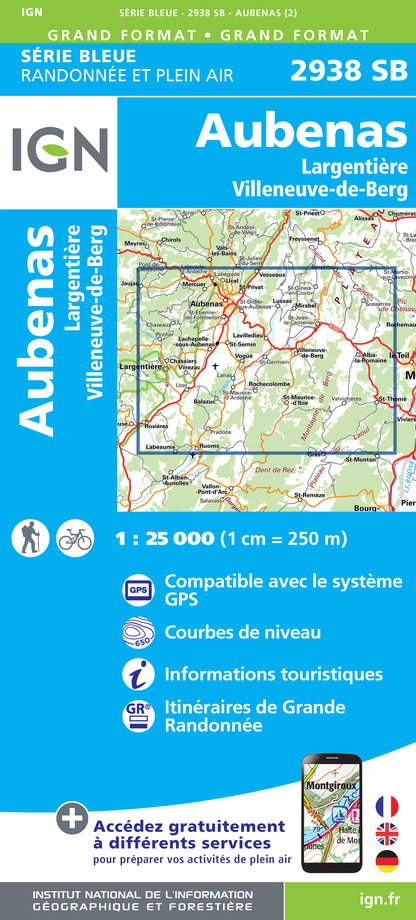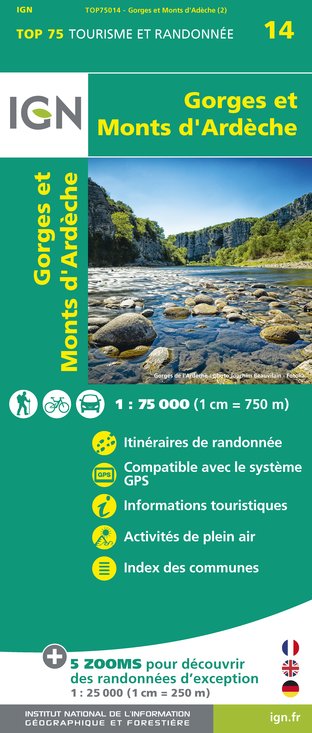Tours
Activities
Places of interest
Where to eat
Where to sleep
Explore Sanilhac, Ardèche, Rhône-Alpes and its wonders
Are you in charge of the destination?Sanilhac, nestled in the heart of Ardèche in the Rhône-Alpes region, is a destination that will charm nature and heritage enthusiasts. Explore the hiking trails that weave through breathtaking landscapes, offering panoramic views of the surrounding mountains and valleys.
Discover the area's exceptional heritage. Visit the medieval village of Largentière, just a few kilometers away, where you can ...See more
Discover the area's exceptional heritage. Visit the medieval village of Largentière, just a few kilometers away, where you can ...See more
What to do in Sanilhac
See more suggestionsOrganize your days in Sanilhac with bookable activities for the whole family.
See more suggestionsIGN cards

2838OT - LARGENTIÈRE LA BASTIDE-PUYLAURENT VIVARAIS CÉVENOL
Editor : IGN
Collection : TOP 25 ET SÉRIE BLEUE
Scale : 1:25 000
13.90€

2938SB - AUBENAS L'ARGENTIERE - VILLENEUVE-DE-BERG
Editor : IGN
Collection : TOP 25 ET SÉRIE BLEUE
Scale : 1:25 000
13.90€

TOP75014 - GORGES ET MONTS D'ARDÈCHE
Editor : IGN
Collection : TOP 75
Scale : 1:75 000
9.80€

TOP100D07 - ARDÈCHE PRIVAS AUBENAS VALLON-PONT-D'ARC PNR DES MONTS D'ARDÈCHE
Editor : IGN
Collection : TOP 100
Scale : 1:100 000
8.40€

83501 - PARC NATIONAL DES CÉVENNES
Editor : IGN
Collection : DÉCOUVERTE DES PARCS
Scale : 1:50 000
9.00€

D13-84 BOUCHES-DU-RHÔNE VAUCLUSE
Editor : IGN
Collection : CARTES DÉPARTEMENTALES IGN
Scale : 1:150 000
5.90€

D07-26 ARDÈCHE DRÔME
Editor : IGN
Collection : CARTES DÉPARTEMENTALES IGN
Scale : 1:150 000
5.90€

NR16 PROVENCE-ALPES-CÔTE D'AZUR
Editor : IGN
Collection : CARTES RÉGIONALES IGN
Scale : 1:250 000
6.80€

EUROPE
Editor : IGN
Collection : DÉCOUVERTE DES PAYS DU MONDE IGN
Scale : 1:2 500 000
7.00€
What to visit in Sanilhac
See more suggestionsExplore the cultural heritage of Sanilhac.
See more suggestionsWhere to eat in Sanilhac
See more suggestionsFood enthusiasts will love Sanilhac's restaurants.
See more suggestionsWhere to sleep in Sanilhac
See more suggestionsStay in unique accommodations in Sanilhac.
See more suggestions










































